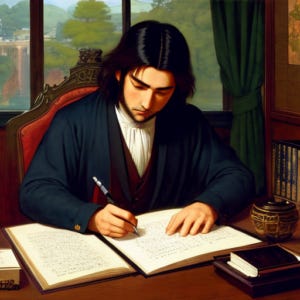Sunday Salutation and Sticking the Ending
For our writing friends out there, what part of a story makes you go around and round the most? For me, it appears to be endings.
While we are still baby writers, working on building up our worlds, works and worth, it feels a little strange to give advice. However, it also feels strange to withhold advice that we have received and found helpful. Maybe it is my training in academia, but usually the best way of learning has been a three-step process: Watch, Do, Teach. When I trained summer students and graduate students, I tended to give them the protocol, walk though it with them, have them watch me do the protocol, then do a side by side (we do the protocol together), and lastly, they would do the protocol themselves. Which I guess made it more of a five-step process. However, I ALWAYS found that teaching a protocol ended up helping me do it better in the long run.
Hopefully in writing, it is the same. Today, we are going to recap a conversation we had about endings as we were struggling with a few of them in our short stories. Tod and I have different ideas about what is required to make an ending. To me, the end is that the immediate conflict has stopped, this is an allowable ending. Tod prefers there to be more closure… A LOT MORE CLOSURE. (Not that much more, to me. -Tod)
It got to the point with one story, I felt the ending was a good page or two before Tod felt it should be. So, we ended up emailing a professional writer, Jane Lindskold, that we met at P-Con. While we did not ask her to read the story, we did ask about what made good endings. It ended up being a long conversation and she said she sometimes gives seminars on endings, so I am going to have to see if she is doing that at Bubonicon some year and attend.
However, the part that really helped was her saying that an ending needs a “sense that whatever the original problem was, it is resolved AND how that impacted the protagonists.” Jane’s response put Tod’s desire into words that made sense to both of us. My ending was missing the impact to the protagonists. Tod’s was longer than what I wanted. But, with that explanation, I was able to come up with a few short sentences, which gave us an ending. We were able to trim the extra pages (snip, snip, snip) and still get a solid ending.
So, a shout out to Jane Lindskold for taking the time to explain to newbie writer(s) why their ending was not working. If you don’t know her or her husband, you are missing out on extremely nice people. You can find her most current books from Baen, the OverWhere series, or her more famous award-winning series Firekeeper and Changer on Amazon, or the bestseller series with David Weber from Baen the Star Kingdom Series book 2,3, and 4 which is an off shoot of Honor Harrington Universe. I have not read these yet – I’m working my way through her solo books.
She even has a fun writing book, Wanderings on Writing, that I am currently reading. Her writing is anything but formulaic, so be ready for something different with a lot of mythological and cultural depth. Note she does not make the promise we do that the dog/pet never dies, so be warned. Still, I have enjoyed what I have read of her stuff. Tod said the OverWhere series is what you get if you take a person who is a planner and put them into a different world. Definitely an entertainingly different take.
Jane Lindskold’s blog is: https://janelindskold.com/wp/
I hope everyone else is doing well and finding the ending, middle, or beginning they need for their work at the end of the year.
To all our Jewish friends out there, Happy Hanukkah! Our thoughts are with you.
~Anna and Tod



